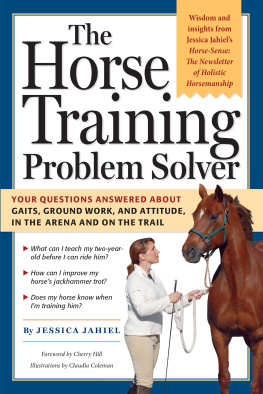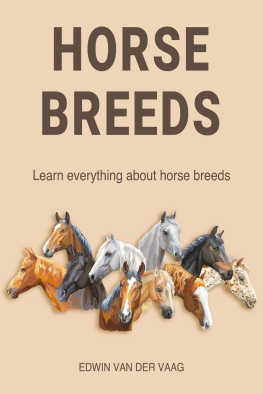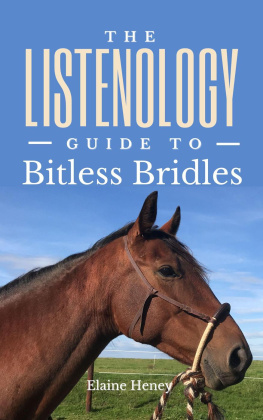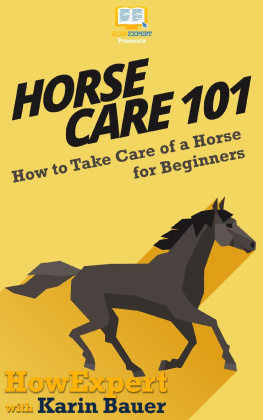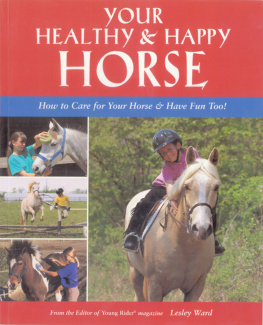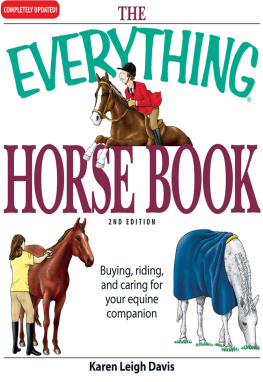Choosing the Right Bit
for Your Horse
Jessica Jahiel

CONTENTS

When you stand in front of a bit wall at a tack shop trying to select the best bit for your horse, many factors should influence your decision. The style of riding youll be doing and your ability; your horses conformation, level of training, and ability; and your budget are all important considerations. In addition, if you plan to use the bit in competition, you need to be familiar with specific showring requirements and restrictions.
The Rider
Honesty is an essential part of horsemanship. Be honest with yourself about your ability, experience, and skill. In the hands of an experienced rider, a bit is an effective communication device, but it easily becomes a torture device in the hands of one less skilled. Good hands are not a gift riders develop them over time through hundreds of hours of correct riding. And its not possible to develop good hands without a strong, supple, balanced seat, which also takes much time and work to acquire. Whether you have a good seat and good hands or are working hard to reach that level, always choose the mildest bit suitable for the horse and the job.
The Horse
A horses mouth is unique, and the conformation of a horses head, muzzle, and mouth varies by breed. To select an appropriate bit, you need not be familiar with all types of conformation, but you should be well aware of the physical characteristics of your own horse. A good bit choice will fit and suit your horses mouth, be accepted by him, and facilitate (not impede) the riding dialogue between you and your horse.
Other physical characteristics to bear in mind include your horses age, the width of his jaw, the length and depth of his mouth, the height and texture of his palate, the width of his bars, the thickness of his tongue and lips, and the general health of his mouth and teeth. No bit will be comfortable for a horse who has a scarred tongue, injured gums, an abscessed tooth, or sharp points and edges on molars in need of floating. Routine dental care and owner attention are essential to maintaining the overall health of your horses mouth.
What Does a Bit Do?
Many riders and some people who have never been near a horse mistakenly believe that the bit and reins are used, often suddenly and violently, to stop and turn a horse. Thats simply untrue. A good rider always uses seat, leg, and weight aids before making gentle use of the bit.
A bit is an instrument of communication. The gentle, educated use of a well-selected bit allows a rider to communicate to a horse subtle requests concerning the position of his nose and also gives context to requests made with seat, legs, or weight aids. Neither the rider nor the horse should put strong tension on the reins or rely on the reins for balance. The ultimate aim of a rider should be to acquire educated hands which are even better and rarer than the coveted good hands so that the bit is always used with clear, gentle finesse. In the meantime, the rider should allow the horse to accept the bit calmly, with a soft mouth and relaxed jaw.

A rider with a good seat and educated hands uses leg and seat aids before making gentle use of the bit.
How Does a Bit Work?
A bit works by applying pressure to sensitive points in a horses mouth and on his head. Inside a horses mouth, pressure points include the bars and tongue (where the bit mouthpiece rests), the corners of the mouth, and the palate. On the head, the points of contact are the poll, the nose, the lower jaw, and the chin groove, where the curb strap or curb chain is positioned. Depending on its design, a bit or a bridle without a bit puts pressure on one or more of these points. The amount of pressure depends partly on the bits design and partly on the amount of force used by the rider.
Bars
The bars are the toothless areas of a horses gumline, located between the incisors and the premolars, where a bit rests. The bars, which consist of skin that covers a thin layer of nerves and tissue over bone, are extremely sensitive, much like the shins of humans.

Pressure points on a horses head and inside his mouth
A snaffle bit rests on the bars and the tongue, even when there is no pressure on the reins. If the horse bends at the poll and carries his head more vertically, he can remove pressure from the bars. A leverage, or curb, bit puts pressure on the bars that increases whenever pressure on the reins increases.
Tongue
Every bit, no matter how its mouthpiece is designed, puts some pressure on the horses tongue. Center links in double-jointed snaffles, and ports in ported snaffles and curb bits, are intended to provide room for the horses tongue and, thus, some relief from pressure. A straight mouthpiece puts a great deal of pressure on the horses tongue. A thick, straight bit, such as the gentle, rubber-covered snaffle, can exert painful pressure in a horse having a thick tongue and low palate or small mouth. Such a horse may need to keep his mouth open if ridden in a rubber bit, which does not leave sufficient room for the tongue.
Lips
Bits act on a horses lips at the corners of the mouth. The lips are well-supplied with nerve endings and blood and are extremely sensitive. Even a passive bit one carried by the horse, with loose reins and no pressure from the rider places light pressure on the horses lips. If the bit is adjusted so high that it pulls back the corners of the mouth, even slightly, the bit applies constant pressure to the horses lips, even if the rider never touches the reins.
Palate
When tension is placed on the reins, pressure on the horses palate may be created by the joint of a bit (snaffle or curb) in a single-jointed mouthpiece or by the port of a curb bit. The amount of pressure the horse feels varies depending on the length of the parts of the mouthpiece, the ports design and height, and the height of the horses palate.
Poll
The poll is the top of the horses head, just behind the ears. This is a sensitive area, with skin covering a thin layer of flesh and nerves. Pressure halters and gag bits work on this area, as do all shanked, leverage bits (curb bits). Curb bits act on the poll because the bit mouthpiece operates as a fulcrum; when the reins are tightened, the lower end of the shank moves back and upward, toward the rider, and the purchase, or upper end of the shank, moves forward and down, toward the horses nostrils. This movement pulls on the cheek pieces of the bridle and puts pressure on the poll.
Nose
The horses nose is another sensitive area where the skin is quite close to the bone and cartilage. Jumping hackamores, sidepulls, and mechanical hackamores all apply pressure to the nose, as do bosals and, to a lesser extent, bitless bridles.


